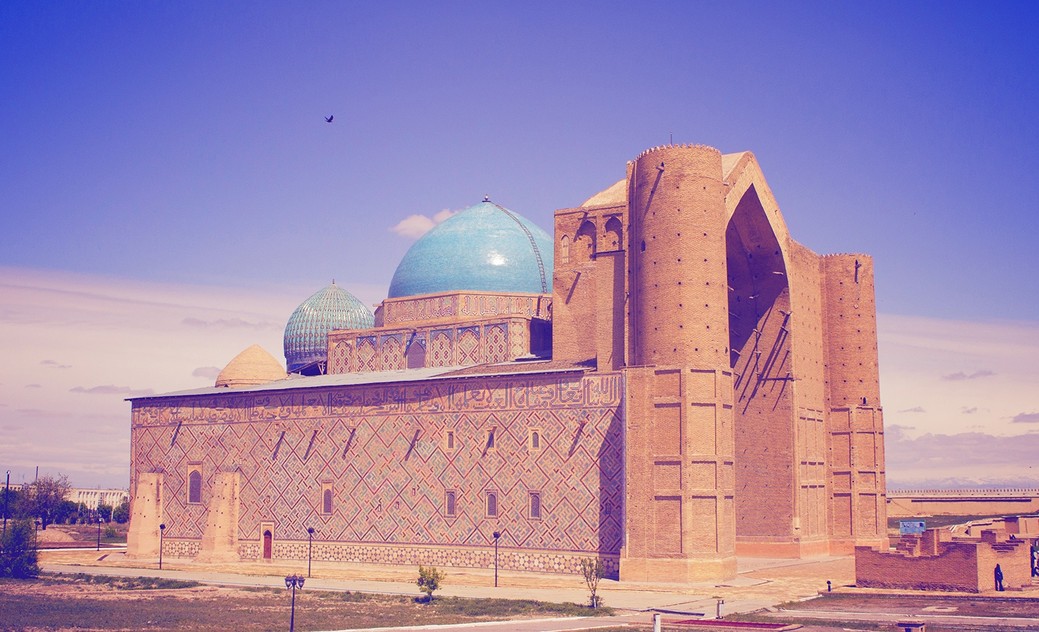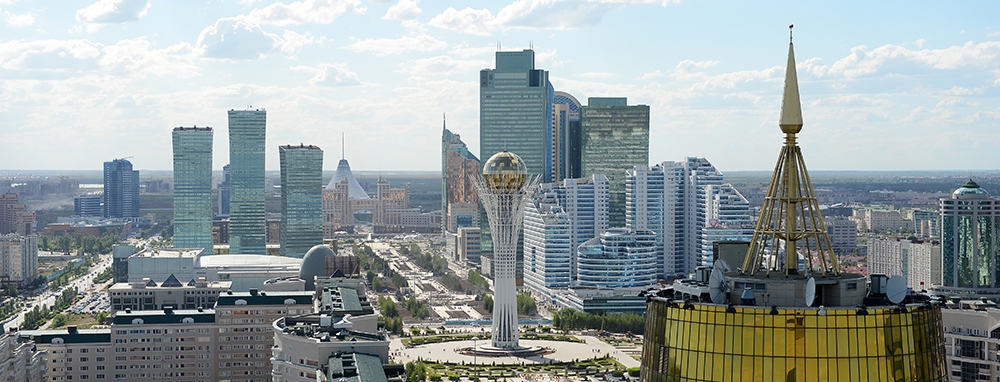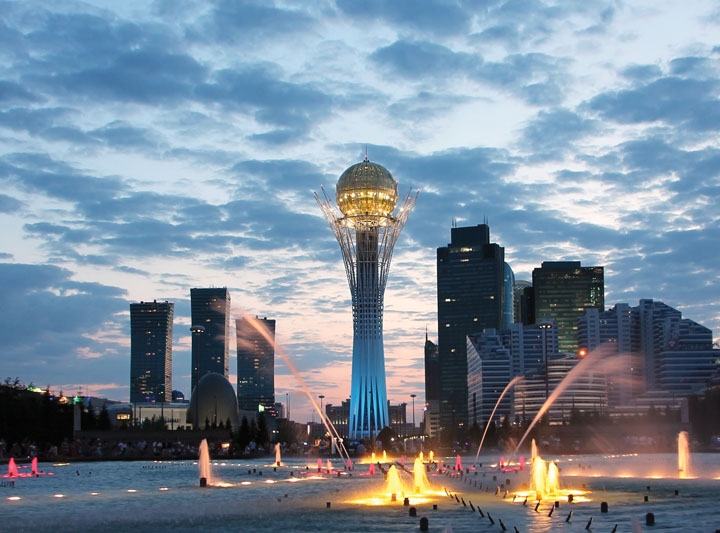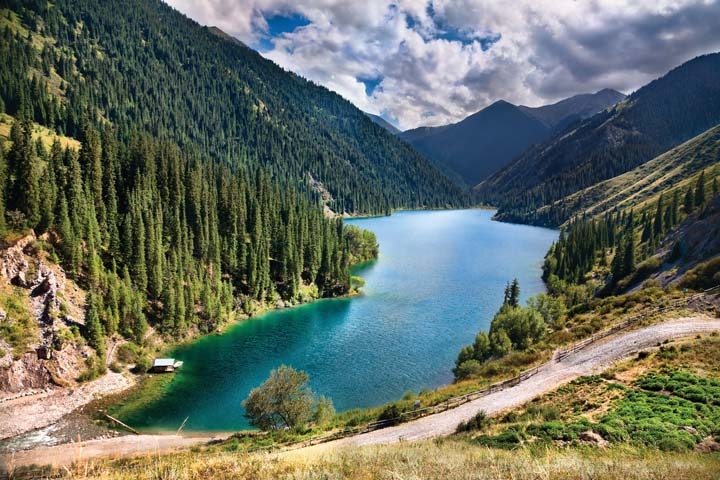
Cultural Life of Kazakhstan: Preserving the Past to Create the Future
by Ambassador Dr. Konstantin Zhigalov
Kazakhstan has a long and culturally-rich history. Thanks to its geographical location in the heart of the Eurasian continent, it was at the crossroads of many historic events. These include the arrival of the horse-mounted nomads at Eurasia; the bright and dramatic fate of the steppe civilizations as well as Kazakh khanates (state); the emergence, rise and decline, and rising again of the Silk Road cities. Many of Kazakhstan’s cultural monuments (there are over 25 thousand monuments of history, archeology and architecture to explore in the country) are from the period of colonization of the Kazakh lands under the Russian Empire and the USSR. In recent times the country’s culture has been enriched in the process of establishing a new, independent Kazakhstan.
A petroglyph site at Tamgaly, 170 kilometres from Almaty, is the most well-known and studied monument of ancient arts in Kazakhstan. It has 5,000 stone carvings dating back to the Bronze Age (14th century BCE) to the rise of the Turkic peoples on the Great Steppe (6-8 centuries CE). UNESCO has been actively involved in the fate of this site and provides support for its conservation.
The Mausoleum of Khoja Ahmed Yassawi, located in the city of Turkestan in South Kazakhstan oblast, is another monument included in UNESCO’s World Heritage List. It represents an encyclopedia of oriental architectural and structural solutions. This magnificent construction was built in honour of Ahmed Yassawi – a distinguished Sufi master, thinker and poet from the 12th century. The mausoleum was built 233 years after his death by order of Amir Timur (Tamerlane), the founder of a powerful empire on the territory of southern Kazakhstan and Central Asia (1336-1405). Today, the mausoleum is one of the main places of Muslim worship. The pilgrims say that three trips to Turkestan is equal to a small hajj to Mecca.
A number of settlements in southern Kazakhstan, including Turkestan, Otrar (former name – Farab), Taraz, Sauran, were among the largest trade centres along the great Silk Road. These cities, which have preserved the graceful architecture of that time, were the places of birth and work of the world-famous personalities such as the philosopher al-Farabi (870-959),Mahmud Kashgari, a scholar and lexicographer of Turkic languages and Yusuf Balasaguni, a poet and philosopher.
The routes of the Silk Road were full of various religions and places of worship that coexisted peacefully for many centuries. Muslim mosques and Sufi orders (whose preaching consisted of elements of the traditional faith of the Turks), Buddhist monasteries, Zoroastrian communities, Nestorian Christianity all graced the land. That peaceful reality greatly influenced the outlook of the Kazakh people.
 The Altyn Adam or the Golden Warrior is another world-known Kazakh cultural icon. This image of a Scythian warrior was reconstructed from numerous gold details of garment, headdress and footwear, which were recovered from a burial mound Issyk near the city of Almaty in 1969. More than 4,000 pieces of gold jewelry made in “animal style” and belonging to the nomadic Scythian civilization were discovered in this burial mound. This civilization flourished on the territory of Kazakhstan in the first centuries BCE and similar kurgans or burial mounds could be found in various regions of the country. The site of the Golden Warrior and the Berel kurgans have been turned into state museums.
The Altyn Adam or the Golden Warrior is another world-known Kazakh cultural icon. This image of a Scythian warrior was reconstructed from numerous gold details of garment, headdress and footwear, which were recovered from a burial mound Issyk near the city of Almaty in 1969. More than 4,000 pieces of gold jewelry made in “animal style” and belonging to the nomadic Scythian civilization were discovered in this burial mound. This civilization flourished on the territory of Kazakhstan in the first centuries BCE and similar kurgans or burial mounds could be found in various regions of the country. The site of the Golden Warrior and the Berel kurgans have been turned into state museums.
The Golden Warrior is one of the most popular symbols of Kazakhstan. Copies of the Scythian warrior are installed in the country’s many cities and one of them crowns the Independence Monument on the main square in Almaty. The image of the young Scythian leader on a snow leopard is also depicted on the standard of the President of Kazakhstan.
These are just a few objects of historical importance. According to the State list of historical and cultural monuments of Kazakhstan, the country has 218 objects of national significance, including the sites of the primitive people and ancient cities, as well as more modern monuments.
As part of a large-scale national programme called Cultural Heritage (2004-2011), Kazakhstan’s government studied key elements of its country’s cultural heritage, including national folklore, traditions and music, and restored the historical and cultural monuments of all ethnic groups living in Kazakhstan. The project also collected and documented rarities that were scattered around the world.
During eight years, 37 settlements were studied and restoration work was carried out on 113 historic and cultural sites. The anthology of oral folklore titled Babalar sozi consisting of 93 volumes was published. There is no country in the world today which has published such a definitive academic edition of national folklore (100 volumes). Unique projects such as 1000 Kazaktyn ani (1000 Kazakh songs) and 1000 Kazaktyn kui (1000 Kazakh kyuis) have been implemented as a result of scientific and folklore expeditions and research. Expeditions to different countries of the world were also carried out including to the Vatican Secret Archives.
The guiding principle behind the Cultural Heritage Program was that the restoration of the past contributes to the development of the future. Since independence, the process of studying the cultural and historical heritage of the country is viewed as greatly contributing to the development of Kazakhstan’s modern culture.
According to the Ministry of Culture of Kazakhstan, there are more than 40 national and more than 8000 regional cultural organizations and over 200 museums. The most famous are the Central State Museum in Almaty, the Museum of Arts named after Abylkhan Kasteev and the Museum of Gold and Precious Metals in Astana. The National Museum in Kazakhstan’s capital will open in the near future. It is a 73 thousand square metre museum showcasing the iconic cultural and historic images of the country from the days of the Saks and Huns to present day and will feature exhibits devoted to Independence, Astana, gold and precious metals, art and history.
Since independence, 18 new theatres had been created in Kazakhstan including the Astana State Opera and Ballet Theatre. Built in the classical Greco-Roman style, the theatre has become one of the architectural gems of the young nation’s capital presenting the latest achievements in the field of theatre arts and stage design. Giuseppe Verdi’s Attila by the Italian master Pier Luigi Pizzi was the theater’s world premiere.
Concert hall Kazakhstan is another unique building in Astana. Its functional capabilities allow for the changing of the configuration of the hall and its acoustics. There is also the Palace of Peace and Accord built in the design of a pyramid, the Baiterek monument and other attractions that are popular with residents and visitors. In 2013, the KazMedia Center was opened in Astana with a total area of 75,462 square metres. It is a hightech and unique facility for the entire CIS and is for television and audio production.
The names of many Kazakhstan’s performers are widely known abroad. These include virtuoso violinist Marat Bisengaliev, who has given concerts in over 35 countries with orchestras such as the English Chamber Orchestra, BBC Scottish Symphony Orchestra and others; the grand prix holder of the Marguerite Long – Jacques Thibaud Competition in France, the pianist Jania Aubakirova; a winner of international competitions in Italy, Japan, Finland and other countries, the violinist Ayman Musakhodzhayeva; the 35-year-old conductor Alan Buribayev, who is a Principal Conductor of the National Symphony Orchestra of Ireland and a Chief Conductor of Brabants Orchestra in the Netherlands; a laureate of international competitions, the singer Alibek Dnishev, and many others. Kazakh masters of opera have been achieving good results recently. In November 2013, three soloists of the Astana State Opera and Ballet Theatre – Sundet Baigozhin, Medet Chotabayev and Alfia Karimova, became prize winners at the international competition of opera singers held in the Arena di Verona in Italy.








